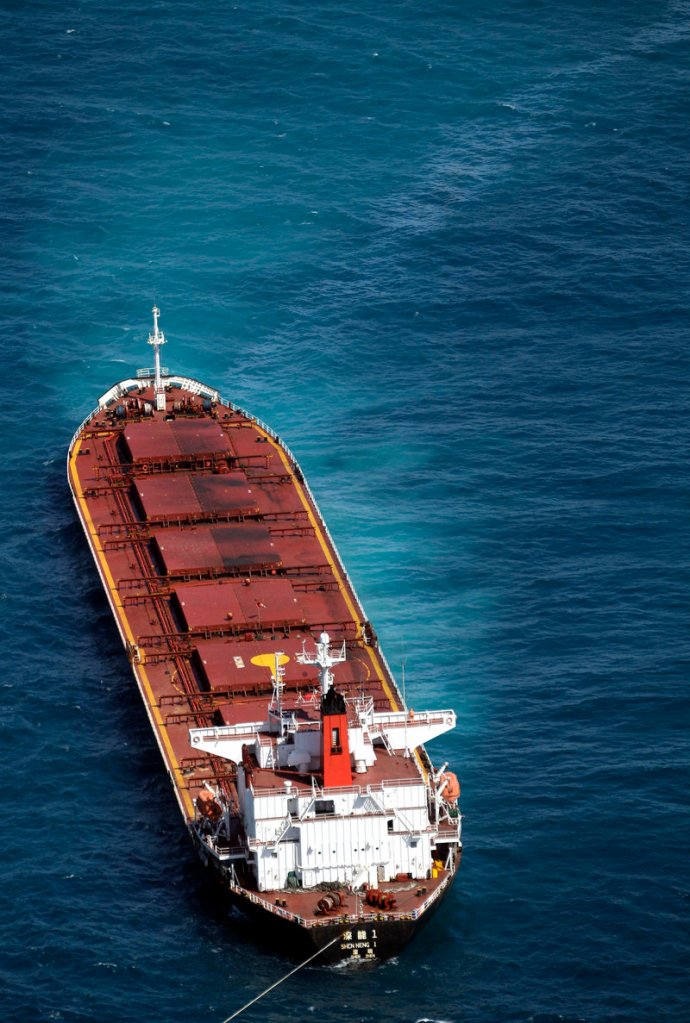SYDNEY – Globules of oil believed to be from a Chinese ship that slammed into Australia’s Great Barrier Reef are washing up on a nearby wildlife sanctuary, officials said Wednesday in the latest environmental fallout from the crash.
The Shen Neng 1 coal carrier veered into protected waters and ran aground on Douglas Shoal on April 3, immediately leaking 2-3 tons of fuel when coral shredded its hull. The vessel tore a 2-mile-long gash into the shoal, causing damage that one leading marine scientist said could take up to 20 years to heal.
On Wednesday, a team of about 25 people was working to clean up bits of oil that had begun washing ashore on North West Island, a turtle hatchery and bird sanctuary about 12 miles from where the ship crashed into the reef, Maritime Safety Queensland spokesman Adam Nicholson said.
The globules were scattered across about a half-mile of beach on the island, the second largest coral key on the reef.
Officials had not officially confirmed the oil came from the Shen Neng, but suspected it had, given its proximity to the grounding site, Nicholson said. The cleanup was expected to be relatively quick, because the oil is confined to a small area, he said.
The 755-foot Shen Neng 1 was successfully lifted off the reef Monday after crews spent three days pumping fuel to lighten it. Salvage crews later towed it to an anchorage area near Great Keppel Island, 45 miles away.
“There is more damage to this reef than I have ever seen in any previous Great Barrier Reef groundings,” Great Barrier Reef Marine Park Authority chief scientist David Wachenfeld said Tuesday.
The Great Barrier Reef is a World Heritage site because of its gleaming waters and environmental value as home to thousands of marine species. The accident occurred in the southern tip of the reef, which is not the main tourism hub.
The reef was hit particularly badly because the vessel did not stay in one place once it grounded, Wachenfeld said.
Instead, tides and currents pushed it along the reef, crushing and smearing potentially toxic paint onto coral and plants, he said.
In some areas, “all marine life has been completely flattened and the structure of the shoal has been pulverized by the weight of the vessel,” Wachenfeld said.
Send questions/comments to the editors.



Success. Please wait for the page to reload. If the page does not reload within 5 seconds, please refresh the page.
Enter your email and password to access comments.
Hi, to comment on stories you must . This profile is in addition to your subscription and website login.
Already have a commenting profile? .
Invalid username/password.
Please check your email to confirm and complete your registration.
Only subscribers are eligible to post comments. Please subscribe or login first for digital access. Here’s why.
Use the form below to reset your password. When you've submitted your account email, we will send an email with a reset code.